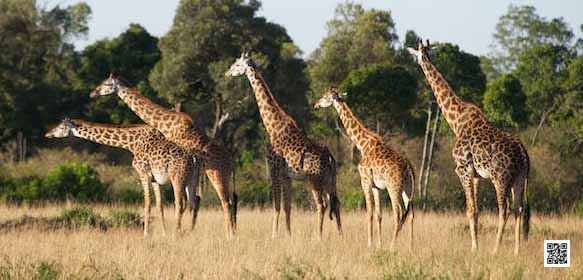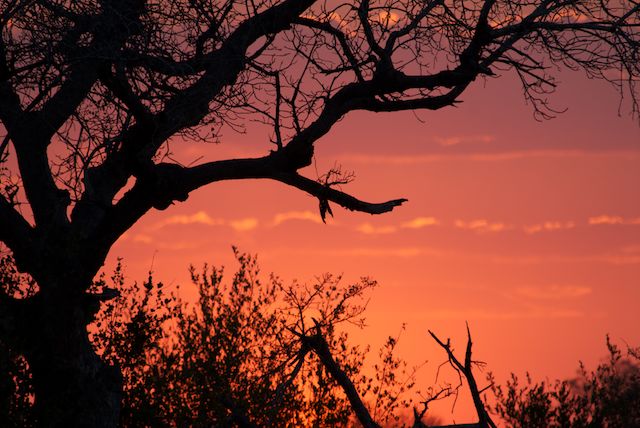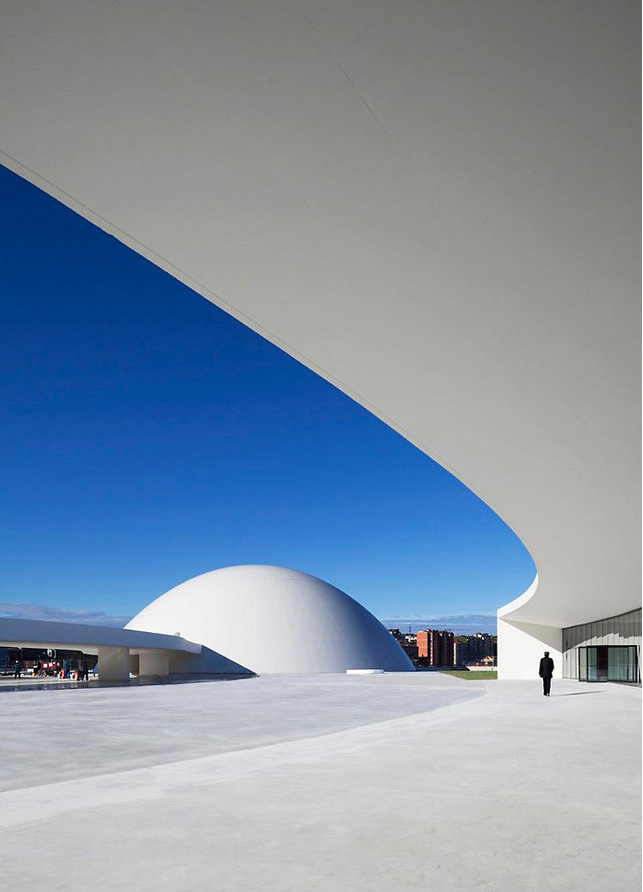27 January 2013
On Photo Safari: Tripod vs. Monopod
02/02/13 08:52 Filed in: Photo Tips

Choosing the right equipment when going on photo safari can be difficult, especially when one has several cameras, lenses and accessories. First it depends on the mode of travel during the photographic safari. Travel by road gives usually no limits regarding the luggage and enough space to bring what you have. Flying is different. The small safari aircrafts have strict baggage allowances, usually 15 kg including hand luggage and photo equipment. Well, a camera body and a zoom lens are easily already 5 kg.
When it comes to accessories photographers are often doubtful, if they should bring a tripod or not. A tripod is nice when you want to do low light photography and night shots, but it needs space. On the safari vehicle is little space to set up your tripod and the tripod will constantly be in the way. And you cannot get out of the vehicle to set it up when photographing animals. It is actually not a good idea to bring one. You better bring a monopod. A monopod is lighter, easier to carry, needs less to no space and can help when wielding a big lens. It is not ideal when wanting to do night shots, because you are still holing it yourself, but if you are not keen on night shots, rather bring a monopod than a tripod.
Happy adventurous snapping!
Ute Sonnenberg for www.rohoyachui.com
How Photography can Help Teams
01/02/13 08:51 Filed in: B2B

Working in teams is a great thing, yet it comes with challenges too. Different personalities, different backgrounds, different ideas, different ways to work and all working for the same goal, friction must be unavoidable.
Friction has a stimulating aspect, but mostly it means loss of energy resulting in inefficiency and unhappiness of the team members. Such a process can develop unnoticed for quite a while and when it actually comes to surface it can be a difficult task to identify the core of the problem and to solve it, because emotions might be high up already and blur the view.
In these situations photography can be a very useful and insightful tool. It can be part of team building sessions, business coaching or leadership training. Using photography brings play into the situation, fun and joy. And it visualizes the issues the team wants to address. What no one can say an image can show. The intuition (or the unconscious) speaks and what emotions blurred, the eye now can see.
If the team chooses to do sessions in a nature environment like e.g. as part of a photographic safari or embedded in a wildlife photography course, nature will be a stimulating environment to open up and enjoy the process, away from the usual environment with all the good nature has to offer. Yet, the key to seeing is the photography, no matter in what environment. Photography is the pleasant that allows easy access to instant insights.
Try it.
Ute Sonnenberg for www.rohoyachui.com
The Rise of Fine Art Photography
31/01/13 08:49 Filed in: Photography & Art

“Great art is great art, whatever the medium.” said Arthur Goldberg, a major US collector of contemporary photography for the last 40 years. (via Forbes)
Some of the fine art photography “top on the list” are Andreas Gursky, Richard Avedon, Irvin Penn, Helmut Newton and Cindy Sherman. The markets are willing to pay lots of money for their art and this is only good. These artists are stimulating young and emerging photographers to follow their example and do what they love to do, photography.
With or without photography study or courses, one can be successful and be a great artist. Intuition is the main resource of creativity and one simply got to trust it. Well, that trusting might be the difficult part when bills are piling up and the rent is due too, yet it’s the way it goes. Helmut Newton was struggling until his early 40ies. Going to Paris made all the difference for him and his career took off. Often it is patience and trust in the passion that bring success.
Keep going and enjoying what you do. Immerse in the love for photography.
Ute Sonnenberg for www.rohoyachui.com
Self-Published Photo Book Library - The Indie Library
30/01/13 09:46 Filed in: Photography & Art

Larissa Leclair started The Indie Photobook Library in Washington D.C., giving a home to rare self-published photo books hoping that the collection will be preserved for future generations to see what great work photographers did, although they might not have been officially acknowledged by publishing houses.
The books in this library are physical books and its great that there is a place to keep them safe for the future, but what about the ephoto books? Wouldn’t it be great to have an ephoto book library instead of ephoto books scattered over the internet with several online publishing platforms? How would it be to have an online library of online ephoto books accessible for anyone from the photography lover to photography teachers available as “text books” during photography lessons?
Imagine photographing during travel, lets say in France or on photographic safari in Africa or on a cultural trip to Asia and uploading right away your on the go ephoto book to the online library and also to find inspiration and tips while creating your photo book from the online library. It could be some kind of itunes “store” for ephoto books, but then free access.
Inspired? Someone should do it and make the photography community happy.
Ute Sonnenberg for www.rohoyachui.com
Photography & Business: The Unconscious has the Lead
29/01/13 10:28 Filed in: Insights & Opinion | B2B

Have you ever had a conversation with your gut feeling? Did you listen? What did happen then? Where you one of those who said, I knew this would happen, but didn’t do anything beforehand with this knowledge?
If your answer is yes, you are one of those who know and don’t do anything with it beforehand, be assured you are not alone. There are whole industries built on doubting the gut feeling or better the not listening to intuition. For example market research. Endless tests with focus groups to find out what new products customers want. But how can customers know they want the new product when the product does not even exist as an idea? Steve Jobs did the only right thing. He made the iPod without any market research, just by following his intuition and no doubt, it was a success. Now, one might think, but there are not so many Steve Jobs. Yes there are, they only need to be encouraged and trained to discover and utilize their intuition, because we all got intuition.
Nobody seems to find it weird to act intuitive in photography, choosing the right photography course and the right photo safari by following their feeling, knowing intuitively what is the right course to do and the right destination to visit. Photography is constantly working with intuition, having the finger on the camera’s shutter to press it when the moment to capture occurs. And the results are photos we love.
In other words creative people like photographers run on intuition, now this ability only needs to be applied to business and science, although scientists are very conscious about the role of intuition as Freud and Einstein say themselves:
Sigmund Freud: “Everywhere I go I find a poet has been there before me. Poets are masters of us ordinary men, in knowledge of the mind, because they drink at streams which we have not yet made accessible to science.”
Albert Einstein: “The intuitive mind is a sacred gift and the rational mind is a faithful servant. We have created a society that honors the servant and has forgotten the gift.”
So, lets focus on intuition and the knowledge of the unconscious, visualize it through photography and for whatever answers you were looking for in your business, you will unearth them with a click on the shutter.
Tap into your intuition consciously and access immense resources of knowledge.
Ute Sonnenberg for www.rohoyachui.com
Oscar Niemeyer - Inspired by Nature
28/01/13 19:54 Filed in: Photography & Art

Oscar Niemeyer, Brasilia’s famous architect and co-creator of the city Brasilia, is well known for his creations made of concrete. In the case of Brasilia I find it personally a bit too much of his design in one place, a bit too much concrete, but nonetheless one can see clearly that Niemeyer was inspired by nature when creating his abstract formed buildings.
He wrote in his memoirs:
“I am not attracted to straight angles or to the straight line, hard and inflexible, created by man. I am attracted to free-flowing, sensual curves. The curves that I find in the mountains of my country, in the sinuousness of its rivers, in the waves of the ocean, and on the body of the beloved woman. Curves make up the entire Universe, the curved Universe of Einstein.”
One could say he created concrete art inspired by nature and concrete was an ideal medium to mold pieces of modern architecture.
For those of us who love photographing architecture, his work is a great subject and also a challenging one, making good examples for photography courses. How to photograph this modern architecture? What is the right angle to capture the spirit of it and not to distort the design? Probably by capturing the spirit of nature he put into it, focusing of dynamic parts of the buildings and one would actually capture the essence of his work.
Well, architecture photographers, take on the challenge and be inspired by a great man.
Ute Sonnenberg for www.rohoyachui.com
Image via Co.Design article on Oscar Niemeyer, read here.
ePhoto Book: App Art
27/01/13 19:48 Filed in: Photography & Art

Photography has become something for every day with the cell phone camera always with us, and a variety of photo apps at hand. The great filters of the photo apps give a boost to creativity and allow easy playing with artistic photography. No photography course needed, only the creative flow and there you are, creating art on the go.
App Art is a selection of app images, even from a wildlife sanctuary in Nairobi. View and download here.
Happy snapping!
Ute Sonnenberg for www.rohoyachui.com